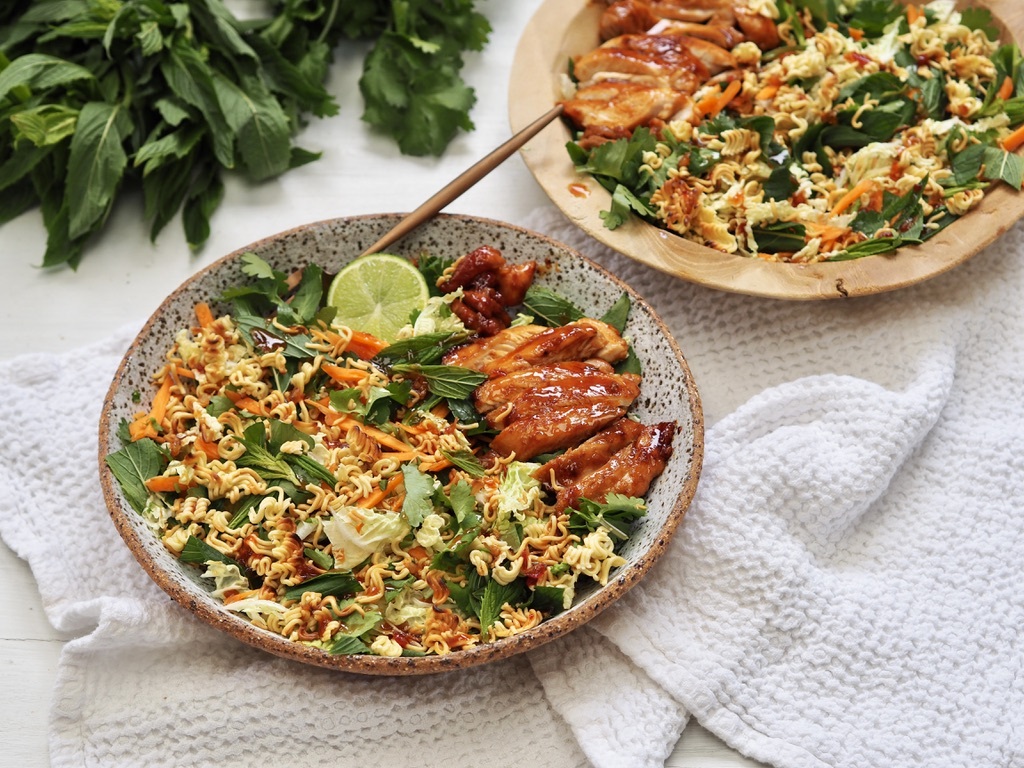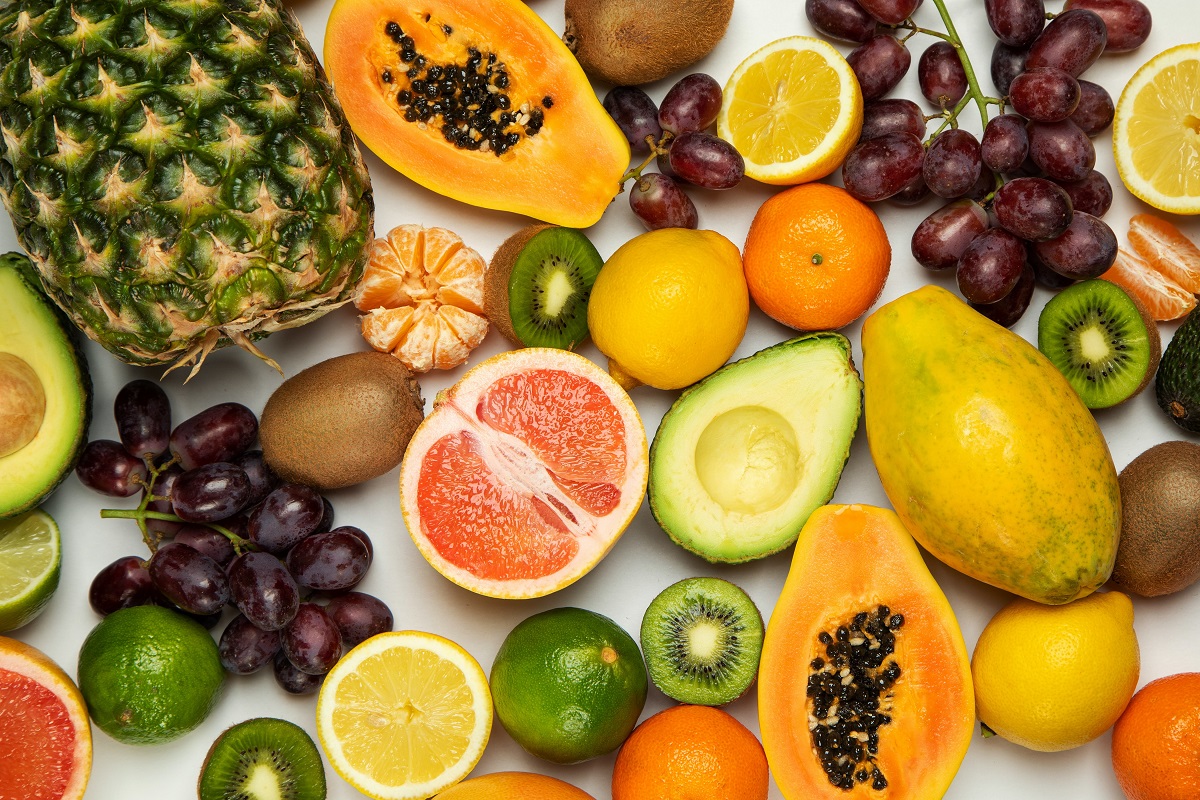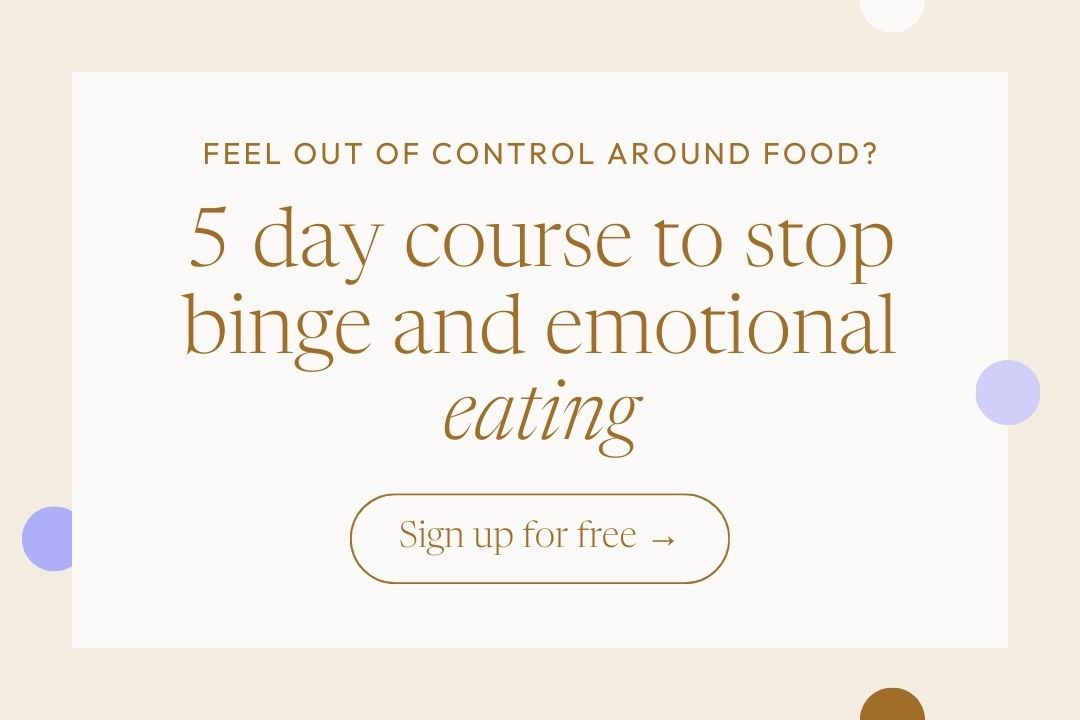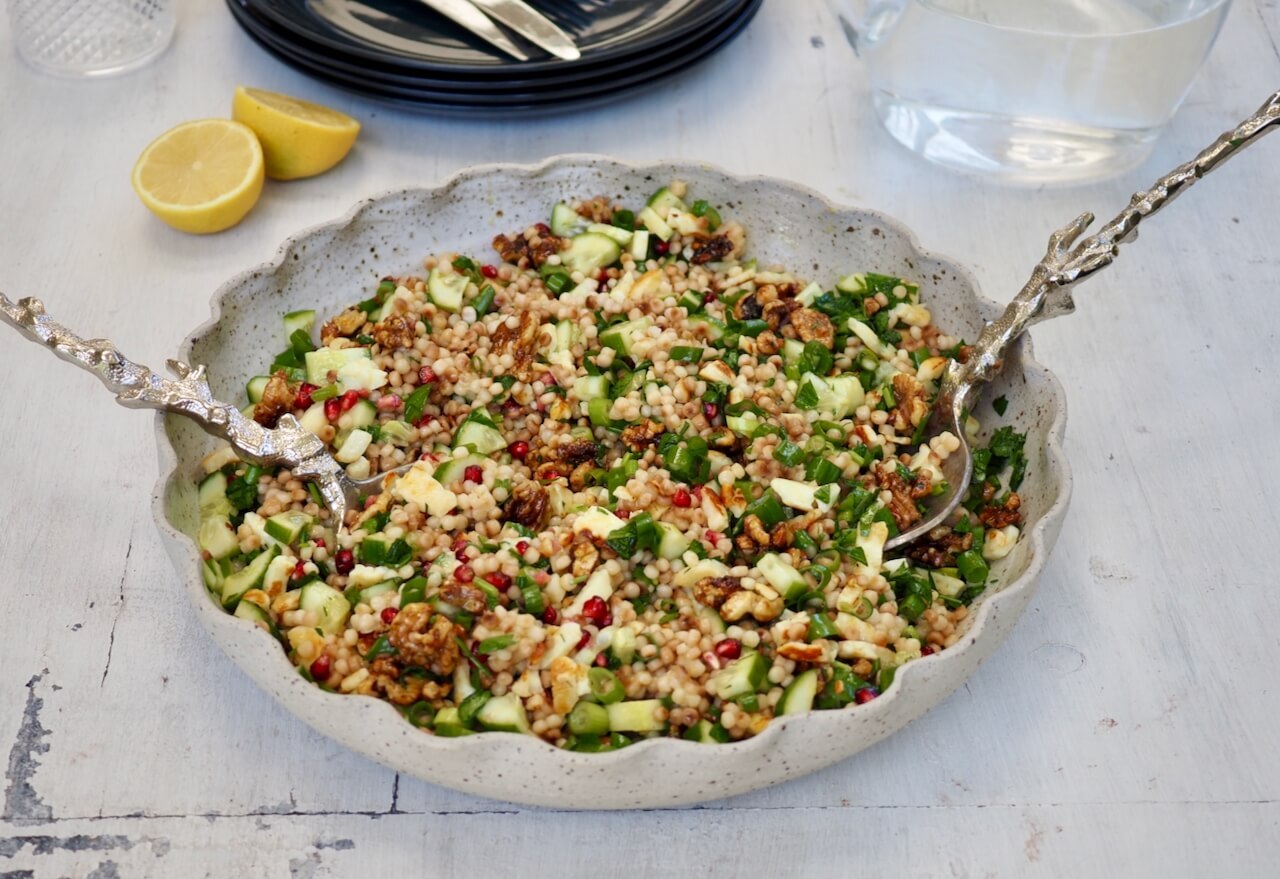If your head is filled with diet rules, you’re probably left wondering- what even is healthy food? Is it just vegetables? Foods with no sugar that are high in protein and low in calories?
After years of dieting and constantly trying to lose weight, it’s common to obsess about food and feel unsure about what you should be eating. So how do we know if something is healthy? What is healthy anyway? It has all become very confusing.
Let me help you simplify things. Here’s 6 tips to help you eat healthily, without the overwhelm.
1. Focus on the context of ‘healthy food’
We tend to think that there’s one definition of health. But most foods fall somewhere on the spectrum of health.
Let’s take sushi for example. It can be a healthy option. Or it can be a less healthy option. It all depends what you’re comparing sushi to. But there’s certainly a place in your diet to have sushi. I consider it a healthy enough option. That’s a definition I’m always running through my mind. Is something healthy enough? It doesn’t have to be perfect. It doesn’t have to fulfil everything. Sometimes it’s healthy if it’s giving you the energy you need. Other times it’s healthy if it’s comforting. Or it could have a whole bunch of nutrients that make you feel better.
Salad dressing is another great example. Fundamentally, it’s mostly sugar, fat and salt mixed together. So is salad dressing itself healthy? No. But if it’s helping you eat more of the healthy stuff, like vegetables, then it’s a healthy addition to your diet. Can you see where I’m going with this?

2. Practice crowding
We need to be more fluid with this definition of what healthy is. Before you ask yourself “what should I be eating that’s healthy?” – focus on what you can be adding to make your meals healthier. We know that only 5% of Aussies are eating enough vegetables. So let’s start here first.
As a dietitian, something I always look for is ways to crowd in more fibre. Things like legumes, lentils, chickpeas, beans and vegetables. For example, if I’m making spaghetti bolognese, I add onion, grated carrot and zucchini. If I’m having eggs on toast for breakfast- I add some spinach, mushrooms or beans.
Keep in mind, you’re going to have meals that are high in carbohydrates with little protein and fibre. Like pasta. Other times, you might have a salad that’s high in protein with lots of vegetables. We don’t always need to stick to the same ratio. Crowding shouldn’t become another diet rule. Instead, it’s an opportunity for you to add more, and give your lovely body the nutrients it needs.
3. Aim for variety over perfection
Fixating on the perfect balance of macros, only eating ‘clean’ foods, or meticulously counting every calorie may seem like the holy grail of healthy eating. In reality, this is an extreme and often unrealistic version of what health eating is all about.
Fruit is incredibly healthy, but if you just lived on fruit, that’s not very healthy. Or let’s say you eat a ‘perfect’ salad every day that ticks all the boxes. But if you eat this every single day, that’s not very healthy either.
We know that when it comes to gut health, we should be aiming for 30+ different plant foods a week. But if you eat the same thing, because it fits within your macros or is considered the ‘perfectly healthy food’, you’re not increasing the diversity of your gut microbiome. This often leads to poor digestion, gas, bloating, constipation and a weakened immune system.
It’s easy to stick to a small number of ‘allowed’ foods, as opposed to embracing constantly varying up our diets. But we’re also meant to change with the seasons. So eating fruit and vegetables at their peak not only offers the best flavour, but provides greater nutrients too.

On that note, stop trying to find the perfect diet.
In some areas of Japan people live really long lives. Particularly when they follow more of a traditional diet. With lots of seafood, vegetables, seaweed and rice. On the other hand, a Danish diet can also be healthy. Both these diets are very different. And yet, both population groups can be incredibly healthy.
You could also go vegetarian and not have meat, and that could be a healthy way to eat. Or you could eat a little bit of meat and still be healthy. It all depends on what other food you’re having. And let’s say you’re only having meat once a month. You could go for that fatty, delicious meat option, because it’s not something you’re having everyday anyway.
So instead of trying to find the perfect diet to follow, find what foods work for YOU.

4. Don’t focus on the label
Do you check how many grams of sugar are per 100 grams in cereal? Or how much protein there is per serve? Avoid cooking with olive oil because it’s high in calories? No wonder we feel so overwhelmed. We’ve been told to focus on nutrients and numbers, as opposed to whole foods.
Think about it like this. You don’t eat calcium. You eat yogurt, which contains calcium. What happens is we get so caught up on which foods that aren’t allowed, like milk and cheese. Because we think it’s too high in calories. Yet, we keep talking about things like calcium.
Instead of following this reductionist approach, focus more on an additional approach to nutrition. What are some of the foods you can include to help you get the nutrients your body needs? Focusing on including a variety of different vegetables, fruits, legumes, whole grains, seeds, nuts, dairy meat (or tofu and eggs) and seafood is much more doable than obsessing over nutrition labels.

5. No food should be off limits
We shame and vilify certain foods without thinking about how a normal person actually eats these things. Is this problematic? Is this worth turning into something? It all depends on you as a person.
Truth is, nothing is awful for you. Yes, some foods may be correlated with cancer, if you’re having them all the time. But if you’re including a variety of food, there’s no reason to say one particular food is terrible for you.
This is where intuitive eating is like a trusted friend. You know, the one that actually listens to what you have to say and always gives great advice. Because when you eat more intuitively, you’re listening to how your body responds to certain foods, and choose what’s best for you.
But if your head is filled with diet rules and if you’re trying to stick to a certain plate where everything is perfect, that’s not going to be intuitive. Sometimes you don’t feel like eating heaps of vegetables. And if you force yourself, you end up unsatisfied. Before you know it, you’re deep in the pantry eating chocolate and cookies.
